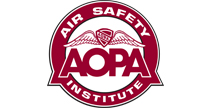Two missed approaches are one too many
SEA08FA078
 By David Kenny
By David Kenny
Airline and charter pilots aren’t allowed to even attempt an instrument approach if the weather is below that approach’s published minimums. Diversion to an alternate is required by regulation. General aviation pilots flying under Part 91 are under no such constraint. They’re free to request and fly the approach no matter how low the weather, but the fact that something is possible doesn’t make it wise, and the fact that it’s legal doesn’t make it safe.
Just before 8:30 a.m. on Feb. 16, 2008, a Lancair LC41 crashed into trees after missing a second approach to Portland (Oregon) International Airport. The solo pilot was killed, and the aircraft was consumed by fire. The pilot had tried two ILS approaches to Runway 10R after having been advised by tower that the ground visibility (runway visual range) was only 600 feet, one-third the published minimum. The ceiling was also low at 100 feet broken; decision height was 200 feet agl.
Conditions had been much better when he left Klamath Falls—calm winds and seven miles visibility with a few high clouds—and the weather wasn’t bad in Portland when he got a route briefing from DUATS shortly before 6 a.m.: light northwest winds, four miles visibility in mist, and a few clouds at 4,400 feet. But the mist was developing into thick fog; between 7:14 and 7:19 a.m., visibility dropped from three-quarters of a mile to one-quarter. By 7:53 a.m.—just about the time the Lancair began receiving vectors to the localizer—it was down to 600 feet.
Related Links
The pilot had a commercial certificate and more than 5,100 hours flight time, of which 429 were in the same make and model and 516 were in actual instrument meteorological conditions. Three minutes after the Portland tower cleared him to land, he declared a missed approach. Following instructions, he established the airplane at 3,000 feet heading 050 degrees before contacting approach control.
He contacted the tower 11 minutes later, while inbound on the localizer, was again cleared to land, and was told once again “RVR six hundred.” Radar-track data showed that the Lancair remained stabilized on the localizer until just before the threshold, when it began a right turn to the south-southeast. The published missed-approach procedure specifies a straight-ahead climb to 900 feet, then a climbing right turn.
The controller instructed the pilot to maintain 2,000 feet and turn right to a heading of 140. The only intelligible part of the pilot’s reply was, “We’re gonna crash.” The airplane was subsequently found to have clipped the top of an 85-foot tree, breaking off about five feet of the right wing. What was left hit the ground 845 feet further east and stopped just 15 feet from the point of impact.
It’s easier to understand why the pilot tried the first approach than why he came back for more. Weather observations are made at just one point; conditions at the runway threshold might be better, or worse. If he’d seen the threshold or the runway end indicator lights, he could have landed. But after seeing how bad things were, it’s hard to believe he expected to make it the next time, and better alternatives were close. Troutdale, less than 10 miles upriver, reported two-and-a-half miles visibility and ceilings of 1,500 broken—comfortably above minimums.
Attempting a below-minimums approach is at best a calculated risk. Trying it when the reported weather isn’t even close, or the first attempt shows no obvious way of getting in the second time, burns fuel you may need for the diversion—provided you make it that far.